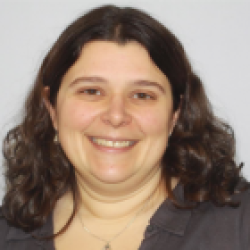One sunny day in May, I had the honor of attending a heartwarming Project Based Learning exhibition at a local retirement home. Two classes of kindergarten students took turns digging a hole deep enough to plant the tree they had decided would be the best one to provide shade for their foster grandmother.
The project started with an offhand comment from the class’s foster grammy during a read-aloud one day. She mentioned that she loved to sit and read on a bench outside her retirement home, but said that in the summer it was very hot because there wasn’t any shade. For a kindergarten teacher with a unit on trees to teach, this was a great opportunity. She and her teaching partner developed a PBL unit with an authentic, kindergarten-friendly driving question: What is the best tree to plant next to Grammy’s reading bench?
 Young Students Can Do Authentic Project
Young Students Can Do Authentic Project
John Larmer, Buck Institute for Education Editor in Chief, has blogged about authentic projects. He writes that there is a continuum of authenticity to be found within projects, from not authentic to fully authentic. When I’m coaching teachers of young students, I find them often tempted to rely on realistic but fictitious simulations. But don’t stop there: young students can do authentic work in the world beyond the classroom. Here are three tips for finding those projects.
Listen to your students.
Young students talk all the time about what is troubling them. Do they hate going grocery shopping with their parents? Could they develop something for young children to do while their parents are grocery shopping? Does it teach them something or benefit the community? Even better!
Don’t think too big.
Projects don’t need to be huge to serve an authentic purpose in the real world. All those crayons restaurants give to kids and then throw away create a lot of garbage. Figure out a way to collect them and donate them to kids in need, and you’ve made a big difference.
Remember this essential equation: content + context = authenticity.
What content do you need to teach your students? If you need to teach them about trees, think about what adults who study trees do. Chances are, some of them decide which trees to plant around retirement homes to provide shade – they just clearly forgot Grammy’s bench.
Young Students Should Do Authentic Projects
Assuming that young students can’t do projects does them a disservice. Kindergarten students have just as many issues about which they are passionate as older students have, and they too can make an authentic difference in their communities. While a foster grammy reading out in the sun might not feel like an issue to be passionate about, for the kindergarten students she helped every day it was truly troubling. Their authentic tree project helped make their community better, for Grammy and all the other members of her retirement home, and it gave the kindergarten students who helped her a taste for making a difference.
As teachers, we need to focus on developing students with a desire for and the means to make positive differences within their communities, and kindergarten is not too young to begin.

